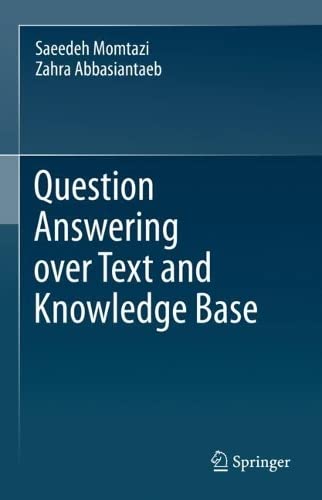

Most ebook files are in PDF format, so you can easily read them using various software such as Foxit Reader or directly on the Google Chrome browser.
Some ebook files are released by publishers in other formats such as .awz, .mobi, .epub, .fb2, etc. You may need to install specific software to read these formats on mobile/PC, such as Calibre.
Please read the tutorial at this link: https://ebookbell.com/faq
We offer FREE conversion to the popular formats you request; however, this may take some time. Therefore, right after payment, please email us, and we will try to provide the service as quickly as possible.
For some exceptional file formats or broken links (if any), please refrain from opening any disputes. Instead, email us first, and we will try to assist within a maximum of 6 hours.
EbookBell Team

5.0
110 reviewsThis book provides a coherent and complete overview of various Question Answering (QA) systems. It covers three main categories based on the source of the data that can be unstructured text (TextQA), structured knowledge graphs (KBQA), and the combination of both. Developing a QA system usually requires using a combination of various important techniques, including natural language processing, information retrieval and extraction, knowledge graph processing, and machine learning.
After a general introduction and an overview of the book in Chapter 1, the history of QA systems and the architecture of different QA approaches are explained in Chapter 2. It starts with early close domain QA systems and reviews different generations of QA up to state-of-the-art hybrid models. Next, Chapter 3 is devoted to explaining the datasets and the metrics used for evaluating TextQA and KBQA. Chapter 4 introduces the neural and deep learning models used in QA systems. This chapter includes the required knowledge of deep learning and neural text representation models for comprehending the QA models over text and QA models over knowledge base explained in Chapters 5 and 6, respectively. In some of the KBQA models the textual data is also used as another source besides the knowledge base; these hybrid models are studied in Chapter 7. In Chapter 8, a detailed explanation of some well-known real applications of the QA systems is provided. Eventually, open issues and future work on QA are discussed in Chapter 9.
This book delivers a comprehensive overview on QA over text, QA over knowledge base, and hybrid QA systems which can be used by researchers starting in this field. It will help its readers to follow the state-of-the-art research in the area by providing essential and basic knowledge.